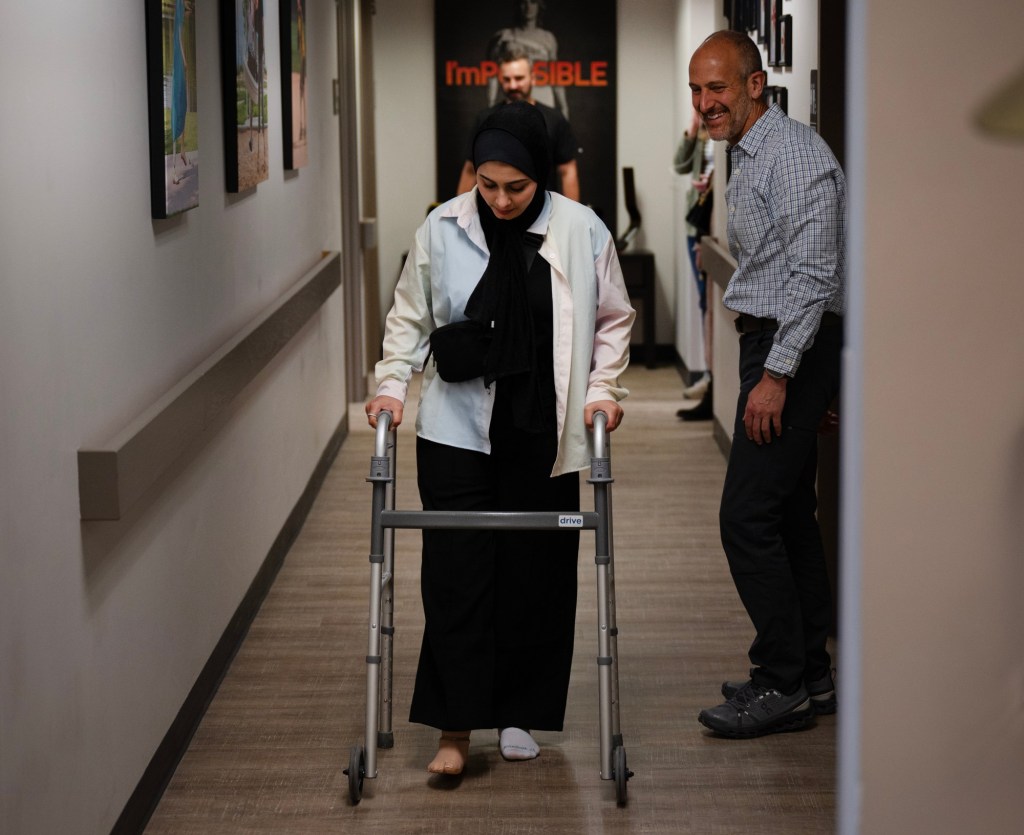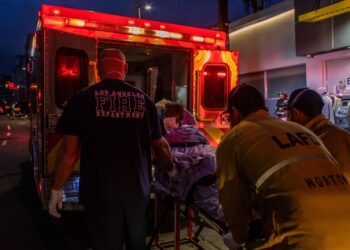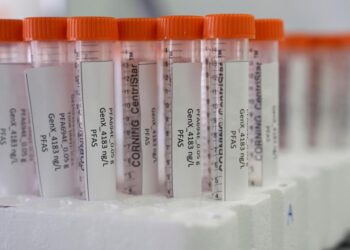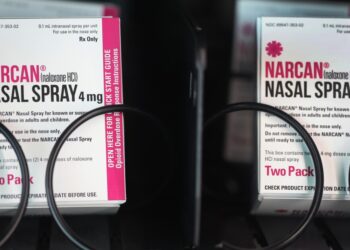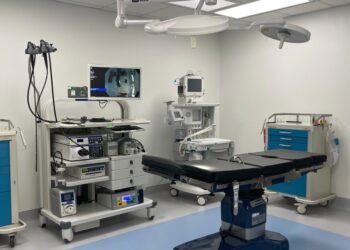Ahed Bseiso took a step forward. And then another.
Her hands held the walker and her eyes were trained downward, watching her left foot advance — and then her new right foot, which followed in a careful, slightly stilted rhythm. She’d learned a short time earlier how to navigate the prosthetic leg, needing only a few moments supported by a set of parallel bars before she lifted her hands and took tentative steps forward.
She was at an Englewood prosthetic clinic, its walls covered in photos of smiling people playing softball or golfing with their prosthetics. Her appointment Saturday was a world away from Bseiso’s home in the northern Gaza Strip.
It was nearly five months to the day since Bseiso’s leg and home were torn apart by an Israeli bomb — five months since her uncle, a surgeon with no other options, placed her on the kitchen table.
Clearing away the bread that Bseiso’s mother had been rolling out moments before, he amputated her leg using kitchen tools, a sponge and a bucket. There was no anesthetic.
It was too dangerous to transport her to the nearest hospital, even though the family lived around the corner from one. But Bseiso, 18, would spend time in over-stretched hospitals over the next weeks, amid a journey of trauma and, eventually, recovery that brought her from the epicenter of the Israel-Hamas war to the United States. While the war continues, she’s received care through a program organized by the Palestine Children’s Relief Fund and its partners.
On Saturday, as Bseiso neared the end of the clinic’s hallway with her walker, she looked up and smiled at her sister. Mona, 21, had been with Ahed when the bomb hit their home in December; they had been on the top floor of their building, trying to adjust their antenna so that they could speak with their father in Belgium. When the explosion tore through the wall, they were too scared to call out to each other, afraid of what silence would mean.
After a brief walk down another hallway…
Read the full article here

